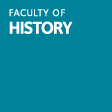In 248 Rome celebrated its millennium, and the commemorations included, we are told, the slaughter of (among others) thirty-two elephants, ten tigers, thirty leopards, ten hyenas, six hippopotami and one rhinoceros. Two years later, another emperor eager to promote empire-wide endorsement of his regime required all citizens to participate in a traditional sacrifice; Christians refusing to commit what seemed to them apostasy risked being consigned in turn to the arena, as further fuel to the entertainment machine.
The study of this period begins with an assessment of the Roman empire, both as the most enduring imperial project that Europe has yet seen, and as a cultural phenomenon which combines many features immediately recognizable today, from the law of tort to the shape and scale of entertainment venues, with such alien aspects as the elaborately stage-managed spectacles of death that these venues hosted. Understanding this world in turn requires critical examination of the source material on which reconstructions of this empire are based, and which proves much less solid than the concrete structures that have survived until today. The scrupulous itemization of the Colosseum’s millennial menagerie, for example, is taken from a whimsical biographical miscellany that contains much deliberate nonsense; the most vivid account of a Christian martyrdom from 250, the Passion of Pionius, is an unsettling combination of documentary-style detail and surreal flights.
From the starting-point of 250, we must ask questions about the vitality and indeed viability of the empire itself. The third century saw remarkable developments in the integration of the Roman world (all free subjects of the empire became Roman citizens in 212), and archaeology suggests that most inhabitants of the many cities of Europe and North Africa enjoyed a far higher standard of living than their descendants would do at the end of our period; but the empire was also far more exposed than it had been a century before to marauders from outside, and its rulers were far more vulnerable to opportunistic rivals or resentful subordinates. There would be some remarkable vicissitudes in the two centuries before the end of the western empire; by 650 the most significant figure in the city of Rome was its Christian bishop Martin, engaged upon a determined but doomed stand against the theological policies of his secular masters in the New Rome of Constantinople.
At the start of our period, Roman decision-makers were keenly aware of a new geopolitical presence, the Sasanian regime in Iran. The animals used to entertain the millennium crowds had been collected (allegedly) to grace the triumph of the previous emperor Gordian III over this new threat; the campaign proved instead the first of many Roman failures on the Euphrates, Gordian the first high-profile casualty.
Sasanian power was eclipsed at the very end of our period, and the last Shah, Yazdegerd III, was assassinated in Central Asia in late 651. The empire, along with much of the Roman East, was overwhelmed by the new force of Islam, emerging from Arabia. By the end of our period the Islamic Caliph Uthman’s forces were operating in Afghanistan and Baluchistan, and had entered diplomatic relations with the Tang regime in China.
The period involves the study of the whole Eurasian landmass and of the interactions between its disparate parts. Steppe nomads made their presence felt from China to the Rhine; the end of the period saw the emergence of the Khazar Khaganate, extending from the Caspian Sea to the Volga and Dnieper rivers; the ruling elite would allegedly convert to Judaism, after representations from the Christian and Islamic empires.
Students exploring this period will be introduced to some remarkable figures, from rulers such as Diocletian, Constantine, Julian, Attila, Theoderic, Clovis Justinian, Khosrow, Gaozu and Muhammad, to religious figures such as Eusebius, Kumārajīva, Augustine, Symeon the Stylite, Gregory of Tours, Gregory the Great, Xuanzang and (again) Muhammad; they will also explore a spectacular range of sources, from the Histories of Ammianus Marcellinus to the Secret History of Procopius and Gregory of Tours’ History of the Franks, and from Eusebius’ History of the Church through Augustine’s Confessions to the Quran.



